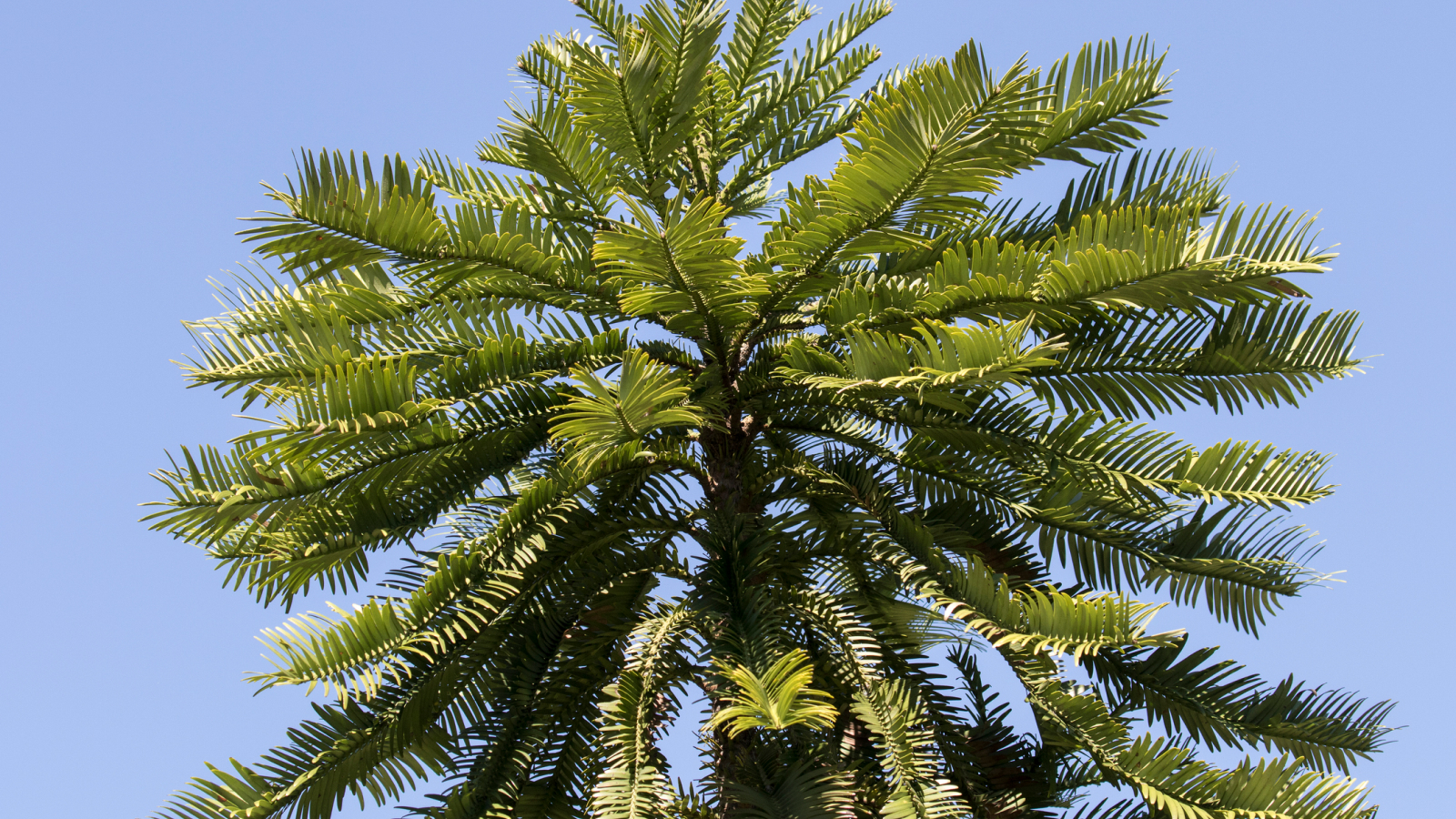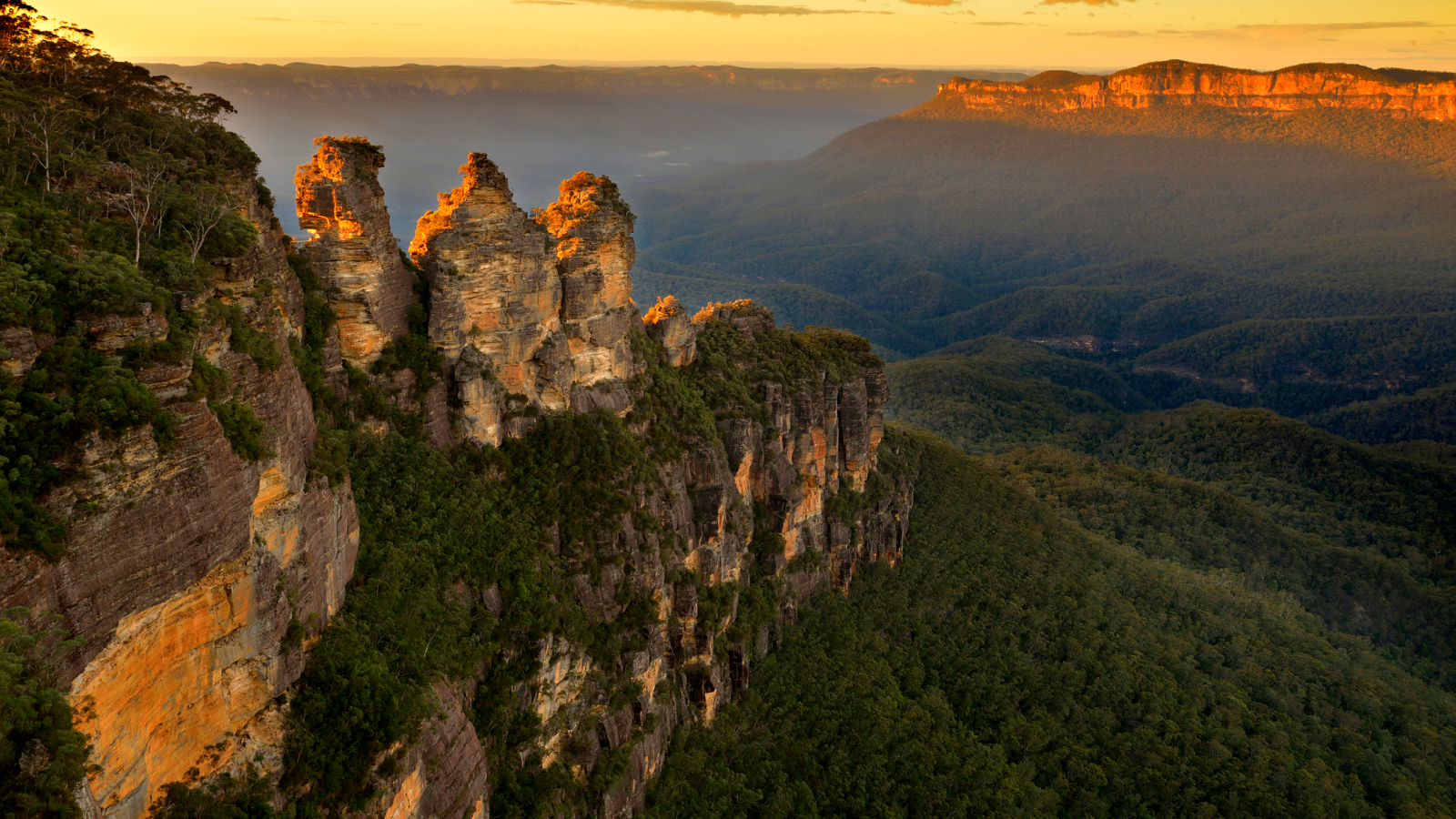'Living fossil' tree frozen in time for 66 million years being planted in secret locations
Wollemi pines — thought to have gone extinct 2 million years ago — were rediscovered in 1994. Scientists are now hoping to reintroduce the species in the wild in a conservation effort that could take centuries.

Scientists are planting "living fossil" trees in secret locations in a bid to bring back the lost species from the brink of extinction — an effort that could take centuries.
Wollemi pines (Wollemia nobilis) were believed to have disappeared some 2 million years ago. Fossils of the species dating the Cretaceous period (145 million to 66 million years ago) show they have barely changed in appearance since this time.
But in 1994, hikers in Australia's Blue Mountains stumbled upon a relict stand of these ancient conifers. Now, only around 60 of them remain in Wollemi National Park. They are threatened by Phytophthora cinnamomi, a pathogenic water mold that causes dieback, and by rampant wildfires that intermittently rage through this region of New South Wales.
Since its rediscovery, wollemi pines have been grown in botanical gardens and private spaces around the world. And the Wollemi Pine Recovery Team, a partnership between Australian government scientists and conservationists, has begun the process of reintroducing seedlings to three sites in Wollemi National Park.
Related: Living fossils — 12 creatures that look the same now as they did millions of years ago
"The sites comprise high-elevation sandstone gorges that are sufficiently deep, narrow and steep-sided to provide refugia from frequent, intense wildfires and drought," representatives said in a statement emailed to Live Science. "There was no evidence of infection with pathogenic Phytophthora species at either site when surveyed immediately prior to the translocations, and there is a low (but non-zero) likelihood of unauthorized visitation due to their remoteness."
Following a pilot transplantation effort in 2012, the recovery team initiated a more intensive project in 2019. Over 400 saplings were transplanted at two sites and — due to drought conditions — the team later hauled several thousand gallons of water to the plants in order to help them survive. Later that year, a substantial number of the trees were destroyed by bushfires. Only 58 saplings made it to 2023.
Sign up for the Live Science daily newsletter now
Get the world’s most fascinating discoveries delivered straight to your inbox.

In 2021, 502 more Wollemi pines were planted at the sites to replace those lost in the fires. "Survival has greatly exceeded expectations, due in part to several years of favorable La Niña conditions following the 2021 population augmentations," the researchers said. La Niña is a periodic climate pattern that features colder-than-average waters in the central and east-central equatorial Pacific. Increased rainfalls due to the climatic phenomenon benefited the new transplants—but that seems to be coming to an end. Landslides caused by heavy rains in 2022 led to further fatalities but more than 80% survived. More will be planted in 2024.
The team has taken extensive steps to prevent introduction of Phytophthora to the sites. Their locations are concealed from the public and even the reintroduction team limits their time near the plants. They repeatedly disinfect their shoes to reduce the likelihood they will track in traces of the water mold. Even a few spores might spell death for this nascent population.
They have also intentionally located some of the young trees in areas that might be subject to bushfires "to help address knowledge gaps regarding their response and ability to tolerate fire," the team said.
While the new populations are being intensively monitored, the fate of the species in the wild is far from assured. The young trees grow less than 0.4 inches (1 centimeter) a year, so it will take decades for them to reach maturity and produce seeds. Some may produce offshoots in the meantime, though when they may begin propagating themselves in this fashion remains unknown.
Fires and other climate-related issues such as reduced rainfall are likely to interfere with the restoration effort in the coming years. The scientists view their effort as a multi-generational one: a new cohort of stewards will need to take their place in the ensuing decades.
"To be successful, the translocated populations must become self-sustaining, and the benchmark is the appearance of second-generation seedlings," the researchers said. "Given the slow growth and maturation of Wollemi pines in the wild, this is likely to take many decades, if not centuries. Given predicted increases in the frequency and severity of fire and drought due to climate change — arguably the two greatest threats to these populations — their long-term security is far from guaranteed."

Richard Pallardy is a freelance science writer based in Chicago. He has written for such publications as National Geographic, Science Magazine, New Scientist, and Discover Magazine.









